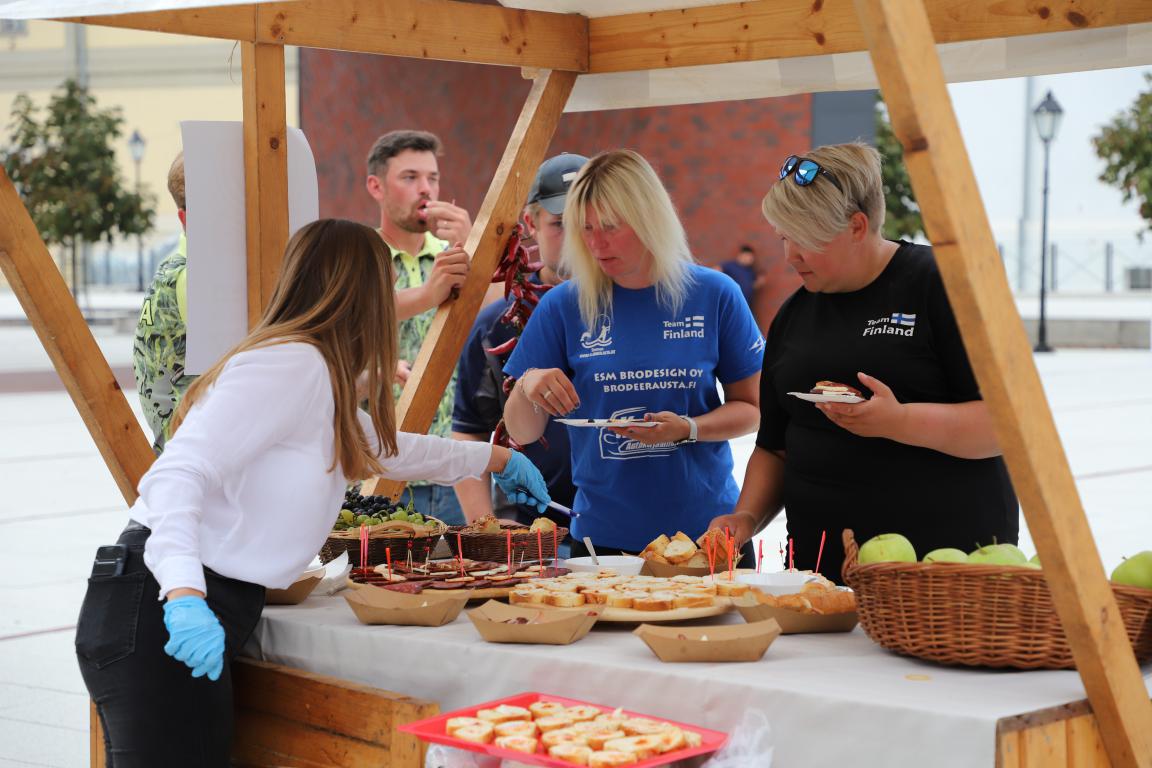Eventful Slavonia and Baranja: World Fishing Championship in Osijek
September 11, 2022 - On Thursday, 8th September, the 68th World Fishing Championship of the discipline "fishing with a hook on a float" was officially opened with a ceremonial parade of all participants. The competition trails are located on the water surfaces of Stara Drava near Bilje and Topoljski Dunavac in the municipality of Draž.
The championship is organised by the International Sport Fishing Federation for Freshwater Fishing (FIPS), and is hosted by the Society of Sports Fishing Associations of Baranja. 33 countries of the world are participating in this year's competition, and each team has five fishermen. Thus, in the area of Osijek-Baranja County, more than 500 participants, coaches and supporting staff, and another hundred judges and official staff are participating in the championship. The competition tracks are located on the water surfaces of Stara Drava near Bilje and Topoljski Dunavac in the municipality of Draž.
Osijek-Baranja County
The championship was officially opened by the technical director of the International Sport Fishing Federation for Freshwater Fishing Roland Marcq, who especially greeted the fishermen from Ukraine.
The representative of the President of the Croatian Government was Deputy Prefect Josip Miletić, who expressed his belief that the participants of the competition will carry everything they experience in Osijek-Baranja County with pride in their hearts.
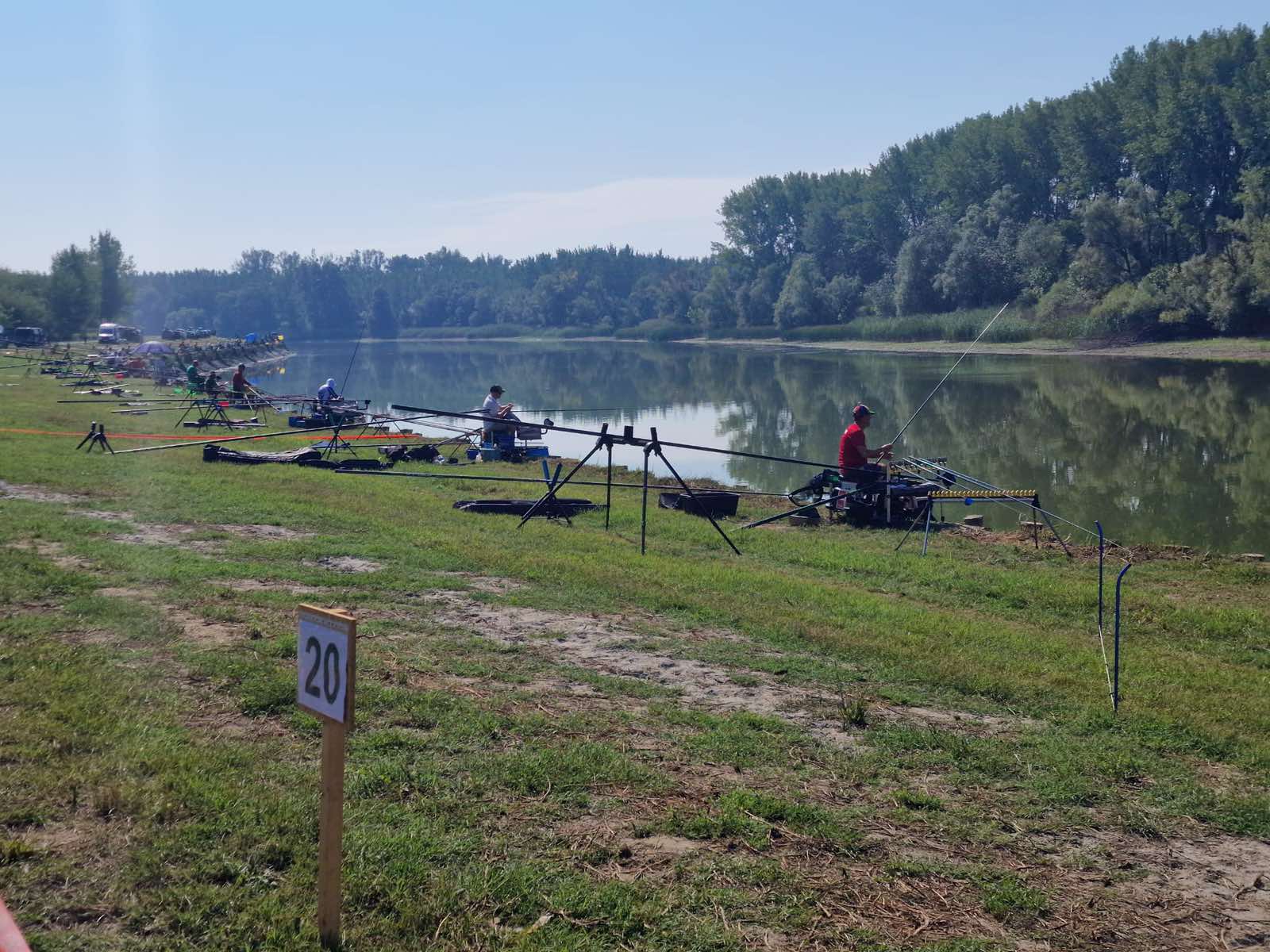
Osijek-Baranja County
"It was not easy to prepare the trails, but I hope that you are satisfied with the conditions and that you will take away nice experiences, and the Osijek-Baranja County continues to financially and organisationally support all major sports competitions, recognising their importance for the wider community", said Miletić with a fisherman's greeting "successfully and clearly".
"This year, 10 more countries gathered than at last year's competition in Italy, and we have been waiting to become hosts for five years," said Anđelko Martinčević and added that Hrvatske Vode invested HRK 4 million in the renovation of the trails, and Hrvatske Šume more than 250,000 kuna for the renovation of greenhouses.
For more, make sure to check out our dedicated Lifestyle section.
Eventful September in Baranja - Over 15,000 Visitors Expected
August 24, 2022 - The Biggest Croatian Fish Stew Day, Fishing Days, Wine Marathon, and World Fishing Championship. September in Baranja looks eventful. Over 15,000 visitors are expected.
As Glas Slavonije writes, since the beginning of the year, more than 13,000 tourists visited Baranja, accounting for approximately 23,000 overnight stays.
The results are significantly better than last year, reaching the level of the record 2019. A real tidal wave of arrivals and overnight stays is expected during September when several events will be held in Baranja that have recently become famous outside of the county borders.
“Judging by the announcements, we expect about 15,000 visitors at the September events alone, mostly domestic, but with a respectable number of foreign visitors as well”, said Matej Perkušić, director of the Baranja Tourist Board, stressing that this should be felt in the occupancy of accommodation capacities throughout Baranja, but also in Osijek and its surroundings. It all starts with the Biggest Croatian Fish Stew Festival, which will take place in Beli Manastir on September 3. It is a "two in one" competition - the Croatian Championship, for the winners of the Slavonia-Baranja competition, and the amateur championship, for everyone else. In total, more than 200 chefs are expected.
“About 70 amateur chefs have applied so far, and we expect the majority of applications a day or two before the deadline, which is in less than a week”, said Perkušić. Along with several interesting games, the bands TS Žeteoci and Magazin will be in charge of entertainment.
The middle of September is reserved for another established Baranja event, Fishing Days in Kopačevo. Ten thousand visitors were there last year, and as many are expected this year as well.
“Last year, because of the pandemic, we decided that Fishing Days would be a three-day event, and it turned out to be a complete success. Therefore, this year they will be held on Friday, Saturday, and Sunday (September 16 - 18)”, said Željko Cickaj, mayor of Bilje Municipality, pointing out that visitors can expect between four and five tons of fish, to which the "gastro programs" must be added, organised alongside with the central part. In addition to local delicacies, guests will also be able to enjoy a cultural and entertainment program. On Friday, after the official opening, the band Gazde will play, followed by TS Kvinta in the tent. Saturday is reserved for The Garden, klapa Rišpet, and TS Nesanica (in the tent), and on Sunday there will be a traditional fish stew cook-off, several traditional music, and dance ensembles, and TS Sitan Vez will perform.
“Although this year there is a problem with acquiring the needed quantities, the members of the hunting club from Kopačevo started their preparations on time, so there will be enough fish” Cickaj pointed out.
And on the last weekend of September (Friday and Saturday), all roads will lead to Zmajevac, to its mountain paths and wine cellars.
“We expect that approximately 2,500 marathoners will “run” the marathon this year, possibly more. Applications started back in February. For example, the team from Hungary that participated in the marathon last year had six members. This year, they expanded the team to 73 members, for both days” on behalf of the organizer, the Surduk Association, said Kristijan Horvat. This year, the partner countries will be Hungary and North Macedonia. An interesting entertainment program awaits visitors. Although the dice are still “coming together”, Frajle, Hungarian violinist Nyari Bernardett, and Macedonian artist Tijana Dabčević will perform together on Friday. The arrival of Tamara Tadevska, who defended the Macedonian colours at the Eurovision Song Contest, is also planned. Concerts on two stages are planned for Saturday.
How good is your knowledge of eastern Croatia? Take the CROMADS test above - how many places do you recognise?
For more, make sure to check out our dedicated Travel section.
Discover the Croatian Danube: Fishing Village of Aljmaš (part 2)
August 21, 2022 – In TCN’s new series, Discover the Croatian Danube, we explore the little villages that lie on the banks of this mighty river. We started from the point where the river Drava “surrounds its water and name to the Danube”, in a small fishing village called Aljmaš. If anything, you might know that Aljmaš is a Marian shrine with a big modern church and that it’s somewhere in Slavonia (could be Baranja?). There is a lot more to these few streets that make the village. A very long and rich history in a geographically important and interesting position. Legends, traditions, and stories of hardship, friendship, and mischief. Learn about the former in Aljmaš part one and buckle up for the latter in the following paragraphs.
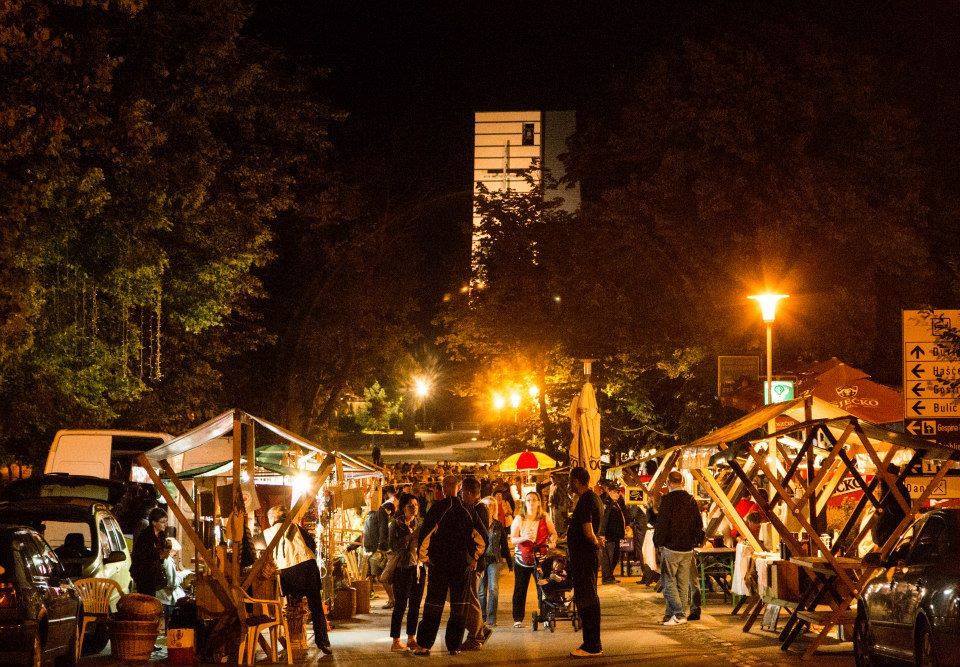
Photo: Aljmaška ribarska noć
Every village has its traditions. They are usually tied to the big holidays or otherwise important events, serve to bring people together, and are overseen by village Google. If you don’t know about the phenomenon, just ask any local grandmother about current events. In Aljmaš, its geography was used to make sure that things run smoothly. Before the modernisation of the infrastructure which took place in the 2000s, there were three canals for the rainwater to drain into the Danube. The embankments were used for social purposes where boys would gather and hang out on one, girls would do the same on another, and the third, you guessed it, was reserved for the smooth running of surveillance.
Other events couldn’t do without it, either. One of them was something called lelujle. In the spring, on Palm Sunday, there was a tradition for the ladies to let their romantic interests know who they were. This was, of course, done using old pots and pans which the girls would throw over the gates of their hopefully future husbands. This all gave the security something to do, as they would have to be the ones to either prevent the accumulation of unwanted old pottery or clear it out afterward. Usually with the words “better take this rubbish back to your mother’s house”.
The final quirky tradition presented here, and the author’s favourite is called buše. It occurs as the accompanying content, or the entertainment to go with the hard work that is the winter preparation of pig meat traditional for Slavonia. To lighten the mood, it was the task of a volunteer trickster to manage mischief. The primary goal was to play a trick on the host and acquire as much meat and snacks as possible, all while making sure that your identity remained completely hidden. Among other things, wine barrels were used to that end. The loot would then be served at a party.
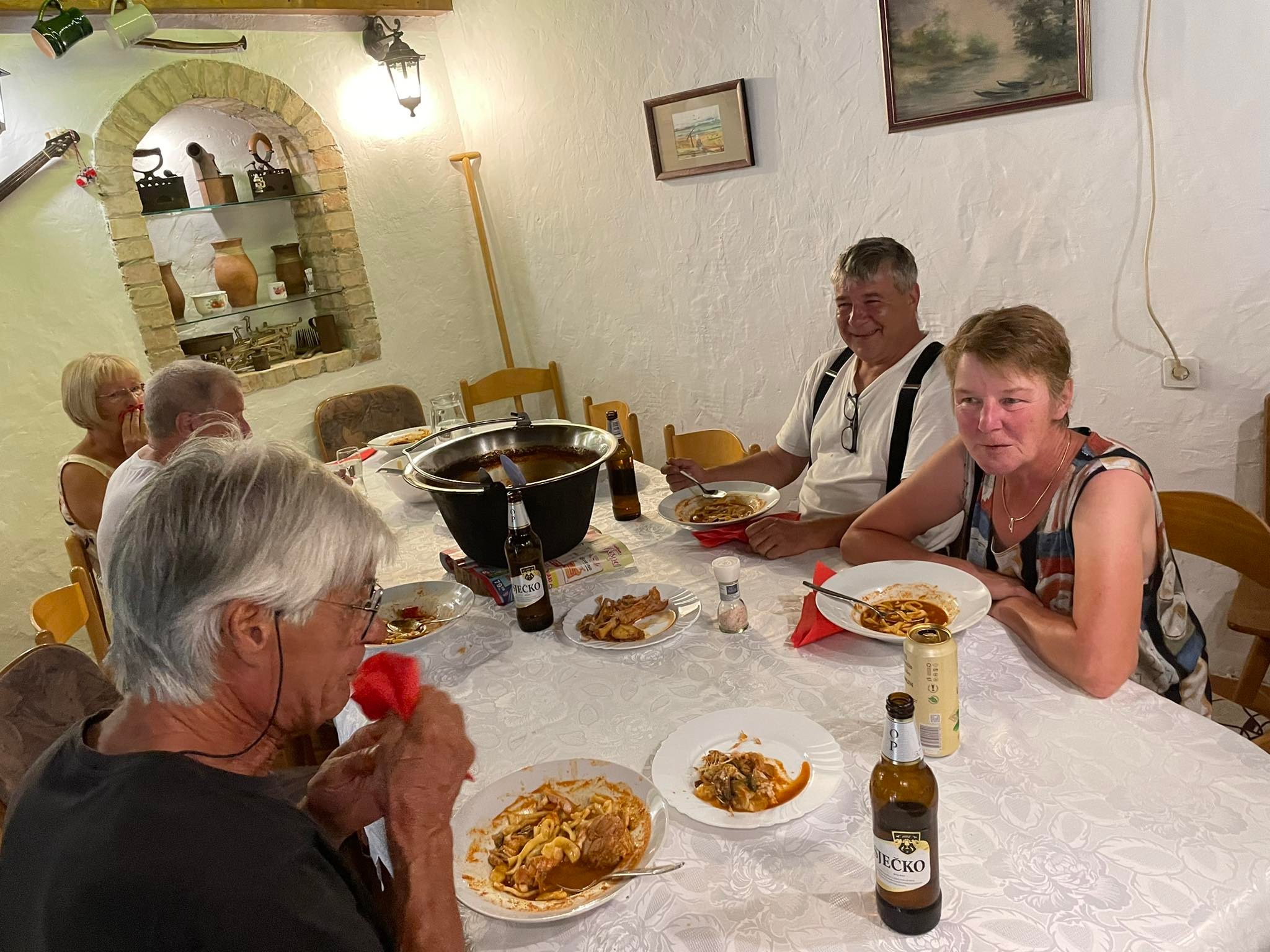
German fishing crew enjoying a delicious dinner
The Danube is the heart of Aljmaš. Fishing, camping, and picnics on the riverbanks are a way of life. Naturally, one of the most important local dishes is fish stew. This delicious, hearty meal is usually made with carp, catfish, pike, or a combination of those, over an open fire in a hanging pot, with an addition of smoked sweet and spicy paprika, onions, and wine. The ingredients can vary, and every good cook will keep their secret, but one thing is sure – love is always the primary spice. And Aljmaš breathes love for the river, for food, for good company, and a good time. A true testament to this is the annual Aljmaš Fishing Night. It was born spontaneously out of a night of good fun, cooking and a friendly cook-off between Dalmatian cooks with fish from the Adriatic Sea and local cooks with Danube fish. The eighth Aljmaš Fishing Night held in 2019 hosted over 8000 visitors who all cooked, ate, sang, and danced all night long. Unfortunately, due to the pandemic, the festival was put on temporary hold, but the organisers cannot wait to be back and have already started planning Fishing Night 2023. A little fishy told us it might be the biggest and best one yet. It is usually held in late May or early June. For more info, to get a feel of the atmosphere, and to make sure you don’t miss the next one, follow Aljmaška ribarska noć on Facebook.

Photo: Susi Petrijevčanin
The driving force of the events, traditions, and all other ways in which Aljmaš lives, is of course its residents. There might not be many, but they are the most generous and friendly bunch. Not only will they greet you with a smile, but they will also host you, show you around and feed you. One of them is Susi Petrijevčanin, a German nurse who decided to move to Aljmaš for love, the fresh air, and the perfect lifestyle. In her words, it’s a place where you can let your child go outside to play all day. They might come back muddy, tired, knees scraped, but they’ll always be happy and healthy. To ensure that a lunch of delicious fish stew is followed by lovely desserts, Susi has opened her dessert shop in Aljmaš, which you can follow here.
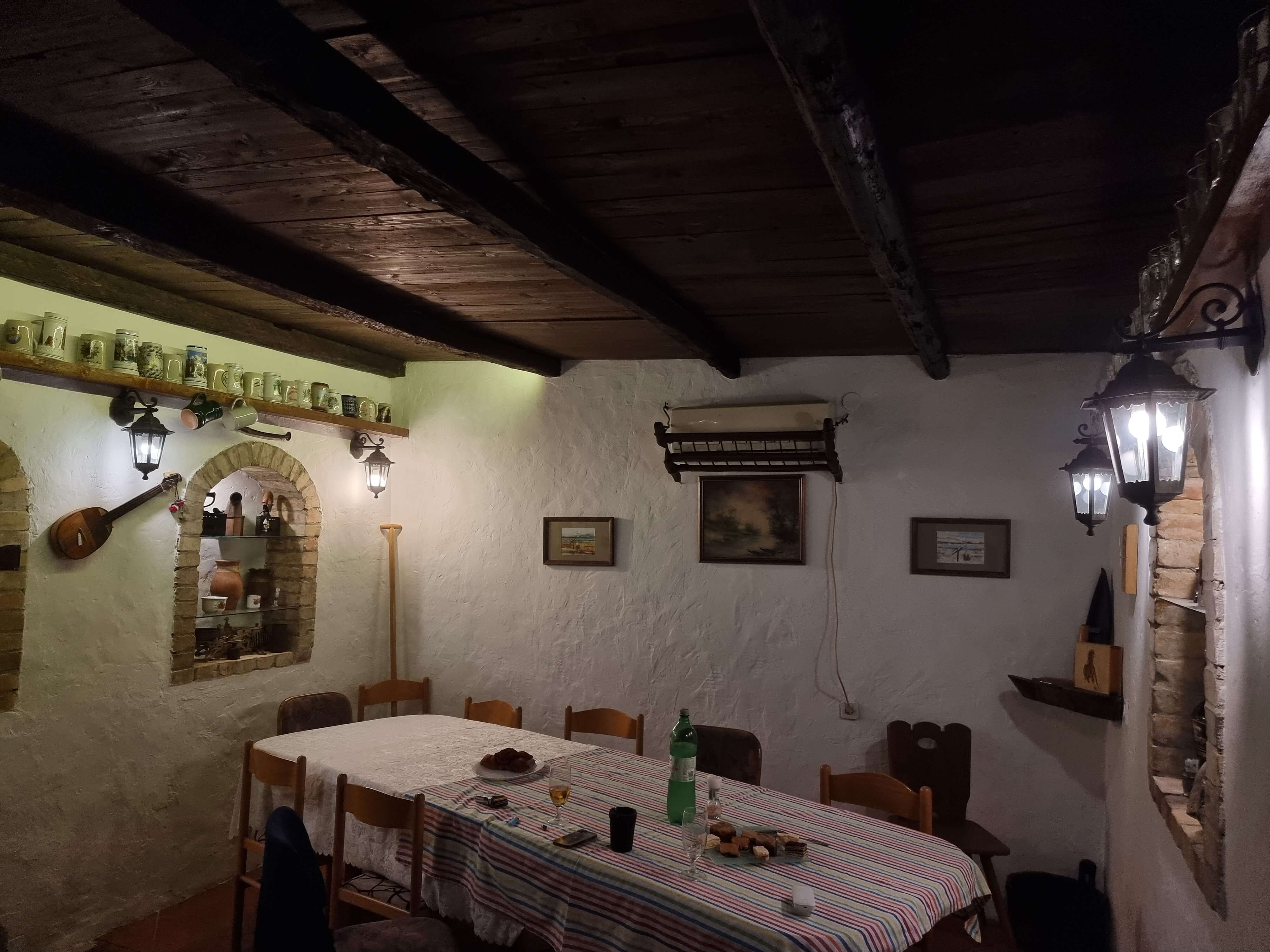
If any of this inspires you to visit Aljmaš, we encourage you to do it yesterday! Our guide Marina will be more than happy to help and will ensure that you have the best time. She will tell you a story or two about the village, her family who has lived in Aljmaš for five generations and might be traced back to Napoleon Bonaparte, as well as what the best ways are to catch and prepare fresh Danube fish. If she likes you, she might even show you her house which has stood in the village since before the 1900s. Whether it’s the original bricks, wooden structure, or the wine in the cellar, there is an incredibly special feel to the place.
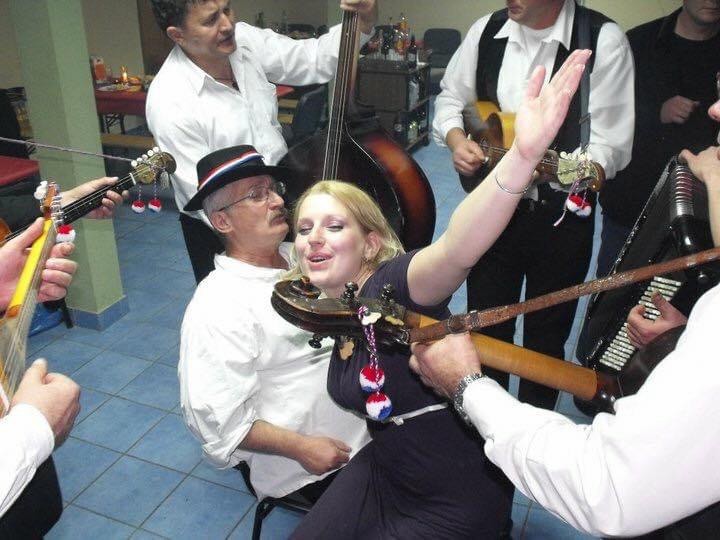
Marina with her father in traditional wear. Standard atmosphere in the village.
If you would like to contact Marina and plan your visit, email TCN This email address is being protected from spambots. You need JavaScript enabled to view it., Subject Aljmas.
How good is your knowledge of eastern Croatia? Take the CROMADS test above - how many places do you recognise?
For more, make sure to check out our dedicated Travel section.
Novi Vinodolski to Showcase Maritime Heritage With New Museum of Fishery
February 15th, 2022 - Novi Vinodolski, a town in the Northern Adriatic, has two interesting projects in development. Both are related to the historical development of fishery and the preservation of maritime heritage and tradition
One is the Klenovica Fishing Centre, an interpretation centre dedicated to fishery as a traditional economic activity; the other is a project that will have tunera lookouts built in Povile village. Both projects are being funded by the European Maritime and Fisheries Fund and were approved through the tender of LAGUR Tunera, reports Novi list.
LAGUR Tunera is a Local Action Group, i.e. a partnership of public, civil and economic sectors in fishing, fish processing and aquaculture. The group was established with the goal of developing local fisheries, and encompasses seven local self-governments: the towns of Bakar, Crikvenica, Kraljevica and Novi Vinodolski, and the municipalities of Fužine, Kostrena and Lokve, which together form a unique fishing area.
Novi Vinodolski Mayor Tomislav Cvitković and project manager Sandra Ristić believe the project in Klenovica will become a new tourist attraction in this coastal town.
LAGUR Tunera has approved funding in the amount of HRK 754,700 for the Town of Novi Vinodolski to implement the project Klenovica Fishing Centre. The funding is intended for the adaptation of the facility and furnishing the interior of the fisherman's house and its grounds, as well as creation of a visual identity, design, and printing of brochures.
‘The main goal of the project is to create an interpretation space that will unite maritime heritage and fishering and present them in an interesting way, but also create a new tourist attraction. Although fishing as an economic activity is much less prevalent today than it has been historically, Klenovica is still recognizable as a fishing village. We can say that we’re known as an exceptional gastronomic destination on the tourist map of the riviera, and we have the combination of fishing and catering to thank for it’, said Mayor Tomislav Cvitkovic, who lives in Klenovica and is a great lover of the sea and fishing.
Project manager Sandra Ristić told Novi list that the interior of the fishing house in Klenovica will be furnished with display tables on which models will be exhibited, while fishing tools will be hung up on the walls. Multimedia panels will be installed to present the intangible maritime and fishing heritage in a modern way, but the fisherman's house itself will retain a traditional appearance, complemented by the exterior decor around the building. Namely, they plan to set up a wooden pergola and build a small square that will be paved with stone slabs and fitted with benches.
‘The residents of Klenovica have kept numerous old photographs that speak of the lives of fishermen and families who dealt in fishing; they speak of the transmission of knowledge and skills in fishing and navigation, of legends and adventures. With a multimedia display we wish to show just how much maritime heritage is ingrained in the identity of Klenovica people and why it represents an important segment of their cultural heritage’, said Ristić.
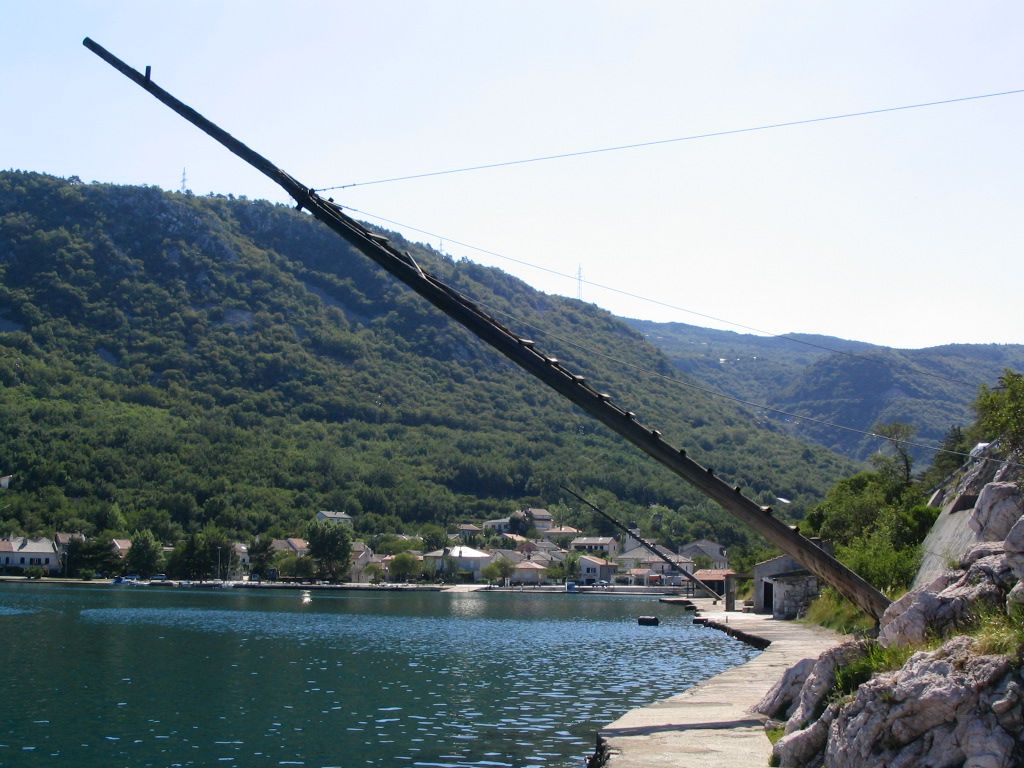 Tunera in Bakarac / Image by Gargamel, Wiki Commons
Tunera in Bakarac / Image by Gargamel, Wiki Commons
There are also plans to set up two tunera in Povile village. Tunera are tuna lookouts, tall wooden towers erected along the coastline to assist local fishermen with tuna fishing.
‘Centuries-old tradition and the unique way of tuna fishing in the Northern Adriatic have left a permanent mark on life in the Kvarner gulf, including the village of Povile that used to have two tuna lookouts. Unfortunately, there is no trace of them today to speak about the past and the most important economic activity in the history of this area, so I believe that the project of building tunera towers in Povile will contribute to preservation of fishing heritage and create a recognizable emblem of the fishery area covered by LAGUR Tunera’, explained Ristić.
Povile will eventually get its own museum of fishing. The project is currently in the works, and once when initial designs are completed, a construction permit will be obtained.
Croatia Increases Sea-Fish Catch and Production
ZAGREB, 14 July, 2021 - Croatia increased the catch and production of sea fish and other marine organisms by 9% in 2020 compared with the previous year, while the value of fisheries rose by 10.4%, according to provisional data from the Croatian Bureau of Statistics.
The increase in the value of fisheries was due to the 11.6% rise in the value of sea fisheries, which in turn was driven by the 10.3% increase in sales.
A total of 66,535 tonnes of pelagic fish were sold last year, which is 7,054 tonnes more than in 2019, while the value of pelagic fish sold rose by 13.7% to HRK 518.2 million.
Also sold were 18,321 tonnes of other fish, their value reaching HRK 774.8 million, up by 13.5% compared with 2019.
The number of fishermen engaged in maritime fishing in 2020 fell by 0.4% to 6,582, and the number of fishing vessels decreased by 0.8% to 7,555.
The provisional data also show that the total production of freshwater fish in 2020 declined by 14.7% to 2,644 tonnes.
(€1 = HRK 7.48)
For more about politics in Croatia, follow TCN's dedicated page.
Journalist Clickbait Victim: The Curious Case of Mystery Fish on Korčula
June 2, 2021 - When TC editor Iva Tatić caught the fish nobody could identify, TCN reporter Ivor Kruljac jumped to action in the hope he will find a marine life scoop. But after the dramatic realization that Atlantic lizardfish is nothing spectacular, he became a journalist clickbait victim. Meet the mystery fish on Korčula.
It was early evening between 7 pm-8 pm on the eastern Korčula coastline on May 28. After a long week of handling the Total Croatia site, TC editor Iva Tatić decided to chill and went fishing. Instead of managing the multilingual site that brings you the best tips on how to travel and enjoy Croatia, she must've been happy with the idea she can enjoy in Croatia herself, as she was preparing two hooks – one with a squid and the other with the piece of bread. Marine life must be very humble cause instead of a squid (absolutely delicious, either fried or grilled and stuffed with swiss chard), the bread was the taken bait for the careless fish soul underneath the Adriatic surface.
Iva took the opportunity and caught its prey, but pretty soon, happiness for the catch was additionally spiced with curiosity.

the source of curiosity and happiness © Iva Tatić
„What the hell is this?“ Iva asked the local Korčula fishermen showing them her catch.
And „no idea“ was the consensus by other marine life hunters.
„Locals call it the spider“, said a local fisherman known as Pero to Iva. „It looks like Spiderman“.
Iva didn't feel that Spiderman is an accurate comparison, and as no one really knew the answer, the whole thing went online.
After Iva shared the photos of its catch on Facebook, the online jury narrowed the mystery to two possible suspects: Saurida and Atlantic lizardfish.
Still being new and wanting to gain recognition in the newsroom, I took on myself to investigate what exactly is this Aquaman-Spiderman-love-child. Perhaps it's something invasive, a threat to the lovely Adriatic, and a fantastic journalist story.
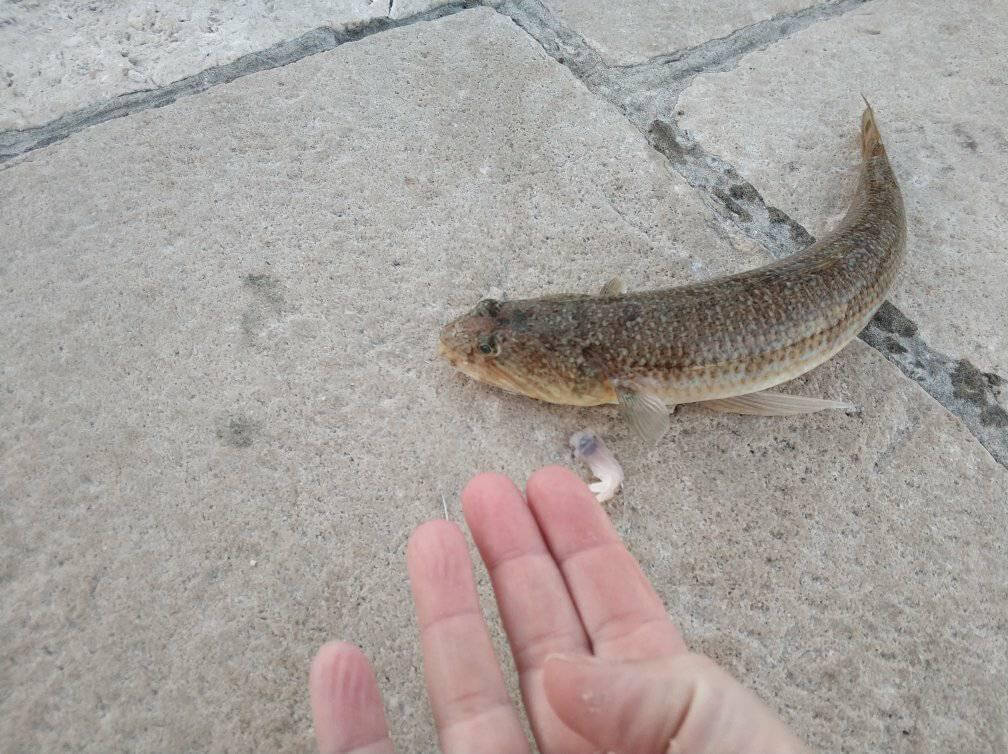
The case, the challenge, the scoop © Iva Tatić
Word on the expert street
A little bit of browsing through the pages of Rovinj Sea Research Centre (CIM), and a few calls, led me to the CIM Senior scientific associate, dr. Andrej Jaklin.
„It looks like Atlantic lizardfish, I saw that fish in person on Pelješac 15 years ago“, said Dr. Jaklin on the phone while looking at the images of the catch I sent him.
Jaklin's memory also seems fit with Pelješac being close to Korčula Island. Still, he said he can't really tell me too much about the fish and recommended it to me to contact dr. Marcelo Kovačić from the Natural History Museum Rijeka. However, dr. Kovačić, a curator for vertebrates, was on vacation, so the call was picked up by Milvana Arko-Pijevac, curator for marine invertebrates.
„I think this could be an Atlantic lizardfish, the head looks like it should, but I'm specialized for invertebrates, mollusks and shellfish“, said Silvana Arko-Pijevac.
So until that point, two experts for marine bio life are certain this is an Atlantic lizardfish (Synodus saurus). Fish, from Atlantic, I thought. Are we talking about an invasive species that manage to come to the northern dead-end of the Mediterranean all the way from the Atlantic? If so, is it hazardous to the domestic sea life of the Adriatic?
Despite recognizing the fish, neither Jaklin nor Arko-Pijevac couldn't say more details, but it's worth noting that the scientific community can once again serve as a role model to everyone who thinks they are experts on everything (both in Croatia but a trend we see spawn worldwide). Instead, my interlocutors accepted and pointed out the limits of their knowledge and suggested me someone who knows more.
Clickbait: It's not just for journalists anymore!
It took me a while to reach Dr. Jakov Dulčić from the Laboratory of Ichthyology and Coastal Fishery at the Institute of Oceanography and Fisheries in Split. First, he was not in the office, and later, he was at a meeting. But, with Arko-Pijevac's claim that Dulčić is the best ichthyologist in all of Croatia, it was worth the wait.
Finally, my mobile phone impulses from Zagreb caught dr. Dulčić in Split, and I excitedly asked him for help. To identify and say a bit more about the mysterious fish fishermen in Korčula failed to recognize, but is suspected to be the Atlantic lizardfish.
„I have to see the photos to say for certain“, said Dulčić.
„I already sent them to your e-mail before this call. Can you please refresh your E-mail?“, I asked with hearable excitement in my voice and suspense in my gut.
The suspense only grew as Dulčić was opening the e-mail.
„Found it!“, he said and I almost screamed out of excitement,
„Yes, indeed, that is the Atlantic lizardfish“, confirmed Dulčić with a relaxed voice while I was ready to ask tons of questions about this weird and possibly invasive species.
„But that is neither exciting nor anything special to catch in the Adriatic“, continued Dulčić with the same chilled tone.
I listened to that sentence with a blank expression fortunately, nobody has seen it except the walls in my apartment.
„You might think it's unusual in Croatian waters because of its name, but it's the normal fish that lives in Adriatic“, added Dulčić.
I couldn't help but think what a sour poetic justice. Being a journalist, a member of the profession in which some of my colleagues try to catch views by clickbait, to be hooked (pun intended) on a clickbait in scientific terminology.
„They can be found across the Adriatic sea, everywhere in Croatia. Their population used to be smaller in the previous years, but it recently got larger. It seems they have certain cycles, but it's nothing spectacular“, he concluded.
„But how come none of the fishermen recognized it?“, I asked puzzled.
„Interestingly enough, it is often caught, but it can rarely be seen on the fish market, and that's a place thanks to which you can usually recognize fish“, explained Dulčić.
However, informing and educating fishers and the general public about marine life in the Adriatic is something dr Dulčić and the Oceanographic Institute are very dedicated to.
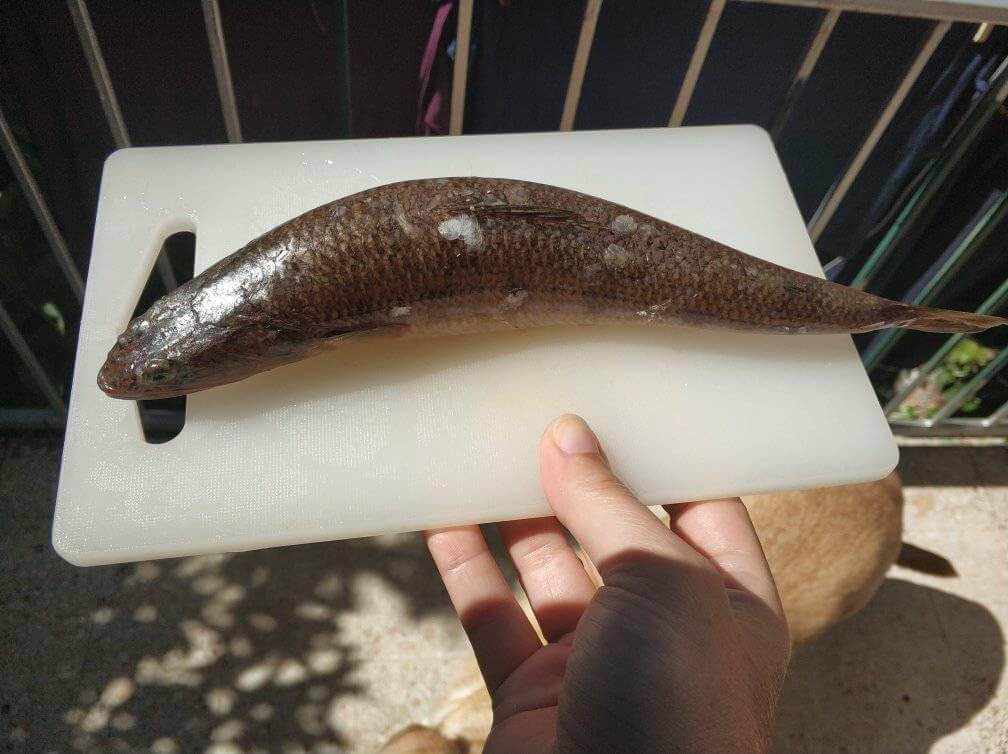
Presenting you the Atlantic lizardfish © Iva Tatić
This is evident by the LEKFishResCRO project.
„This project will address the need to improve knowledge on the trends in Adriatic fisheries with novel methods as well as to acknowledge recent changes in fish biodiversity in a complex Adriatic ecosystem. The central objective of the project will be to evaluate the potential use of the LEK in developing the knowledge base for fisheries management and conservation. The strategy employed for this evaluation will be a two-way discussion between fisherman and other stakeholders from one side and fisheries biologists from another side around the subject of what sorts of indicators of ecosystem health would make sense in light of both the LEK of the fishers and the research-based knowledge (RBK) of the fisheries biologists“, says LEKFishResCRO website, and with loads of materials, you can check yourself.
„We collaborate well with fishermen, we work on their education, and with their tips and images they sent from the field we quickly gather research data“, explained Dulčić.
The invasive species are legitimately a threat to Adriatic, and it comes from the Red Sea through Eastern Mediterranean, but these examples are excellent topics for some other articles.
In the meantime, the mystery fish is identified as a mainstream species in the Adriatic. Somewhat newsworthy (maybe?), but this time my ship returned without a scoop from the stormy cruise in the sea of information.
I sent a message to Iva explaining what she caught (which she already found out on her own, she is a good journalist after all), and I only confirmed that she can unfreeze it and eat it safely. Additionally, I found this recipe at least.
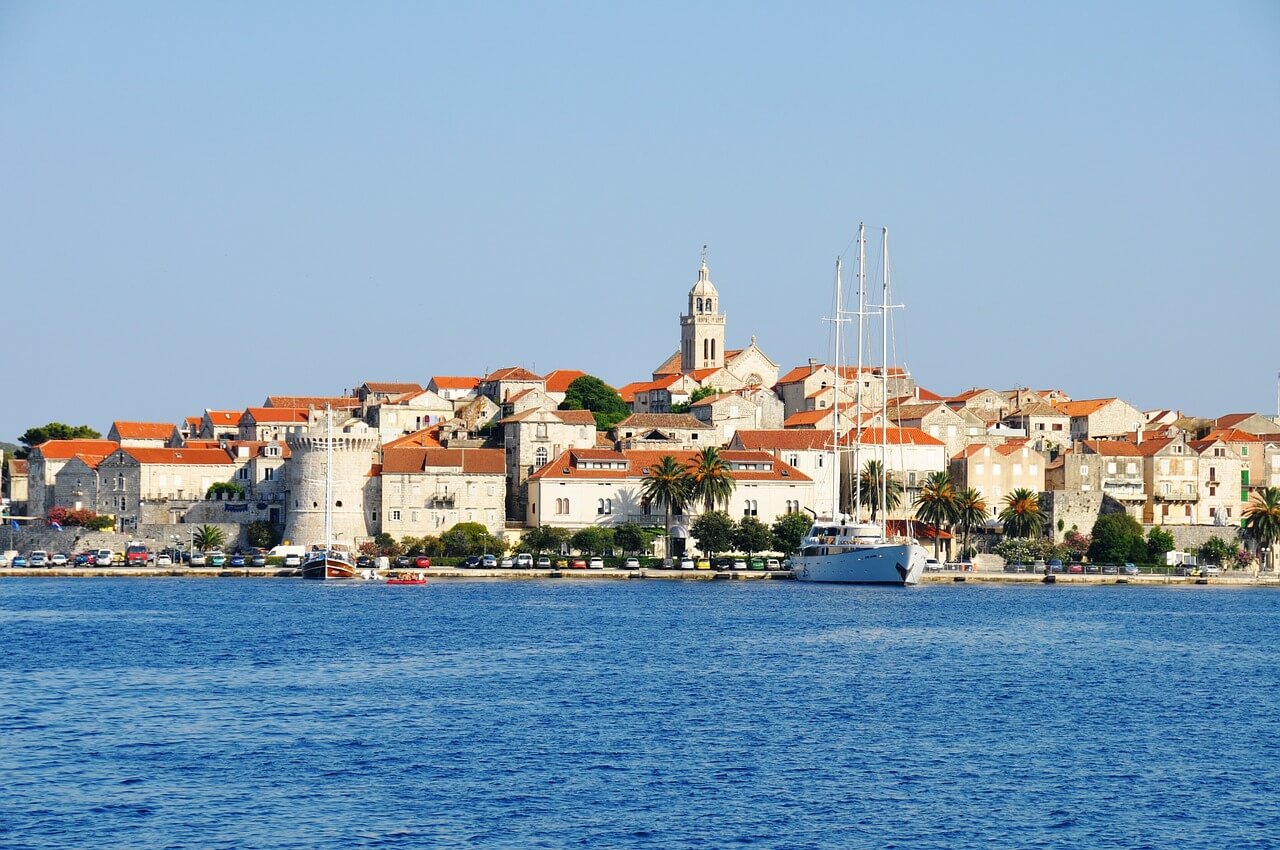
Korčula and Adriatic Sea, Pixabay
Enjoy the Adriatic, but respect marine life
In an attempt to conclude this investigative piece (let's pretend it is one, please) on a socially responsible and eco-friendly note, I asked dr Dulčić if there are any type of fish tourists and locals shouldn't fish because it's on the verge of extinction and if caught it should be returned to the sea immediately. „Such fish is living in areas and conditions where you can't catch it with hooks or nets. But Do not dive out noble pen shells (Pinna nobilis), or disturb mammals such as dolphins. And be careful around sharks and jellyfish“, concluded dr. Dulčić.
Learn more about Korčula on our TC page.
For more about science in Croatia, follow TCN's dedicated page.
Navy Provided with Two High-Speed Boats to Monitor Fishing
ZAGREB, Nov 4, 2020 - The Croatian Navy on Wednesday received two high-speed interceptor VHB M-46 boats to be used to monitor fishing activities in the Adriatic.
The boats were procured based on an agreement concluded in July between the defence and agriculture ministries.
As much as 70% of the value was covered by EU funds while the remainder was secured by the Agriculture Ministry. The Defence Ministry has provided crews and logistic support.
The VHB M-46 speed boats will be used for monitoring the fishing activities and will be also available for search and rescue missions on the sea. They are equipped with secure navigation, contact systems, infra-red and tv-cameras to monitor and record situations by day and night.
The boats enable a four-member crew to spend several days out at sea whereas the boats overall capacity is for 12 people.
One boat will be given to the Pula Coast Guard while the other will be allocated to the Coast Guard unit in Split.
Adriatic Sea Flourishes In 2020 As Waters Replenish
October 14, 2020 – Whales, dolphins and shrimp have returned to Croatian waters in greater numbers than in living memory as the Adriatic sea flourishes in 2020's quieter season
For obvious reasons, it's been an extraordinary year for everyone. Much of the news to report hasn't been the happiest. But, even in times of crisis, it's still possible to find reasons to optimistic and thankful.
In 2020, more tourists than in previous seasons have stayed away from Croatia's shoreline. However, their absence has been filled, in part, by a remarkable return of sea life. The Adriatic sea flourishes in 2020 with mammals, fish and crustaceans.
Dolphins are a wonderful sight to catch around the Croatian coast at any time, but not a great surprise – dolphins enjoy the fish-filled, crystal clear Adriatic as much as we all do. But the large whales spotted in Croatian waters this summer are quite uncommon. Dolphins filmed swimming near Ugljan island earlier this year as the Adriatic sea flourishes in 2020. You can find a link to this dolphin video above © Youtube screenshot
Dolphins filmed swimming near Ugljan island earlier this year as the Adriatic sea flourishes in 2020. You can find a link to this dolphin video above © Youtube screenshot
Researchers from the Blue World Institute are now sure that two separate whales have inhabited the Velebit Channel between August and October this year with at least one, if not both, still remaining in the area.
Of course, the wholly negative way of explaining their appearance would be to blame the uncommon occurrences on global warming. But, things may not be so clear cut. Less sailing, fewer pollutants and much fewer cruise ships in the Adriatic this year may well have made the area more inviting for the large mammals.
Key to a whale's desired place of dwelling is the food available to them. While the strict lockdown witnessed early this year struck a heavy blow on Croatia's fish markets and, in turn, the country's fishing industry, the fall in prices, the lack of demand and the reduction in fishing allowed the Adriatic to replenish.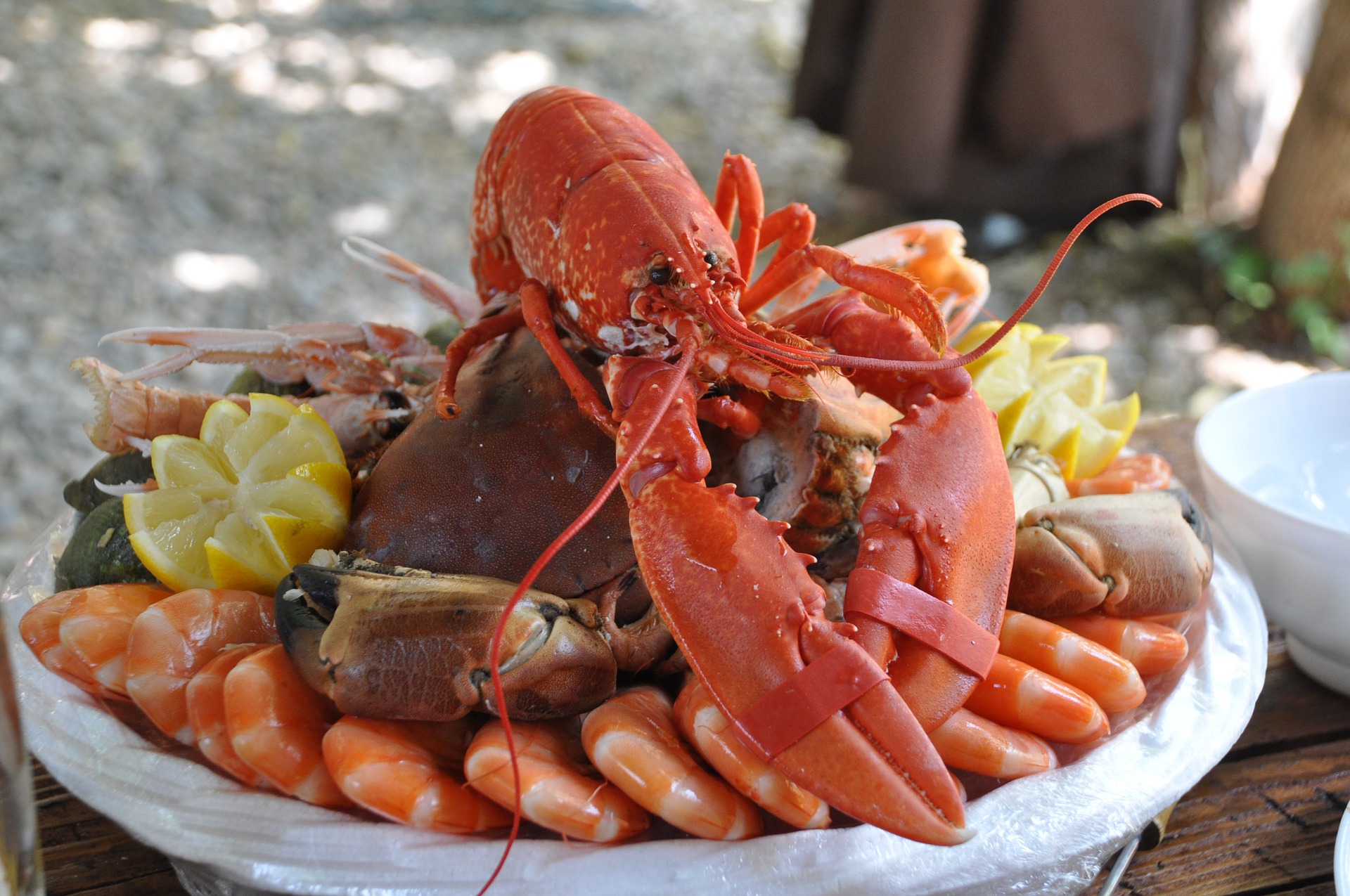 Crustaceans have also benefitted from a fallow year. Split fisherman Antonio Šunjić told Slobodna Dalmacija he sees an explosion in Croatia waters of shrimp numbers as the Adriatic sea flourishes in 2020 © Nadine Doerlé
Crustaceans have also benefitted from a fallow year. Split fisherman Antonio Šunjić told Slobodna Dalmacija he sees an explosion in Croatia waters of shrimp numbers as the Adriatic sea flourishes in 2020 © Nadine Doerlé
In an interview with Tanja Šimundić Bendić in Slobodna Dalmacija on 10th October 2020, Antonio Šunjić, the first man of the fishermen's guild of Split and Split-Dalmatia County gave first-hand witness. He attested to an increase in tuna number (a favourite of the whales) this year. He also sees an explosion in shrimp population as the Adriatic sea flourishes in 2020.
Those who have long grown from and fed off the land know well how to look after their most precious commodity – farmers leave some fields fallow during a whole season, sowing no seeds for a year so that the ground may rest and fertility return. The fallow period the Adriatic has experienced in 2020 may deliver much greater long-term wealth than the temporary inconveniences caused by this extraordinary season.
For the latest travel info, bookmark our main travel info article, which is updated daily.
Read the Croatian Travel Update in your language - now available in 24 languages.
Vrsar Seabed Being Drilled for Works on New Fishing Pier
As Morski writes on the 11th of March, 2019, the current situation at Vrsar harbour is now very lively. The Rijeka companies Vodogradnja and BSK Commerce began intensive works on the upgrading of Vrsar's pier, which would increase its capacity to allow for fifteen bigger fishing boats to moor.
As was reported by Glas Istre from Poreč Port Authority, the Croatian Ministry of Agriculture will invest a massive 10.5 million kuna in this project, 75 percent of which is funded by European Union funds and 25 percent comes from the funds of the competent ministry. The works will see the extension of the already existing sixty-metre-long pier.
All of the other projects that are due to be carried out in Istria in other port administrations are under preparation at this moment in time, while in Vrsar these works are being carried out currently and intensively within the framework of their previously planned deadline(s).
The pier is being extended for the needs of Vrsar's fishing infrastructure, meaning that its primary intention is for local fishermen. With the extension of the existing pier, fifteen new spaces for larger fishing vessels will be provided. On the construction site, Glas Istre came across one of the representatives of the Vodogradnja Rijeka company, engineer Davor Grbac, who confirmed that the works were now in full swing.
''We're currently in the seabed drilling phase where we will set up 22 pilots, which will be fitted with assembly parts manufactured at the factory. Following on from that comes the installation of the power and water supply,'' stated Grbac, he added, among other things, that the plan as it currently stands is to carry out the works on the pier in two phases. The first phase should come to an end at the beginning of this year's main tourist season, and then be picked up and ready to continue at the end of September.
Make sure to stay up to date by following our dedicated lifestyle page.
Click here for the original article by Slaven Brajkovic for Glas Istre
EU Funds for Croatia's Island Fishermen and Fish Processors
Through the Maritime and Fisheries Operational Program, the amount of 234.9 million kuna was agreed for 635 users for their projects on seventeen islands in Croatia, while the amount of 176.7 million kuna was paid to as many as 570 beneficiaries.
As Morski writes on the 8th of March, 2019, the largest amount of beneficiaries of contracted and paid funds are on the island of Ugljan, where as much as 27 percent of the total contracted funds for beneficiaries on the islands have been contracted. Given the large number of fishermen on the island of Ugljan, particularly in Kali, the measures that have been taken relate to (among other things) health and safety and energy efficiency on fishing vessels, as well as an additional measure aimed at improving the conditions for product placement on the market, thus achieving a higher price for the products themselves.
''Our fishermen, fish farmers and [fish] processors are well acquainted with the opportunities the Operational Program for Maritime and Fisheries provides, and that has also been confirmed by the growth of the available funds [for this sector] over the last two years. Since the beginning of the implementation of the Maritime and Fisheries Operational Program, a total of 42 tenders have been issued to date, of which 34 have been during the mandate of this government. So far, 47.27 percent of the allocation, or 1.2 billion kuna, has been contracted, and almost 600 million kuna has been paid,'' said the minister of agriculture, Tomislav Tolušić.
Investment on the island Brač is set to occur immediately after the investment on Ugljan. On the other fifteen islands, most of the investments have been directed towards fishing and measures related to it, examples of that are Hvar, Dugi Otok and Cres.
There is also investment occurring in the field of energy-efficient heating and cooling systems in construction facilities for fish processing, as opposed to outdated ''classic'' systems (fossil fuel systems). Money will also be pumped into improving business processes by acquiring new IT equipment and more modern business management software.
Within the Croatian Maritime Operational Program for the Programming Period 2014-2020, 348.7 million euro (252.6 million euro from the EU budget and 96.1 million euro from the budget of the Republic of Croatia) have been made available.
These funds are extremely important to Croatia's fishing sector and as such meets their very specific needs over the aforementioned time period. Within the operational program, in cooperation with all interested stakeholders from scientific institutions, local and regional self-government units, state institutions and entities from the fisheries sector, 36 different measures were covered for the entire sector, from sea and freshwater catches and farming, to the processing and eventual marketing of fish products, to producer organisations and FLAGs.
Make sure to stay up to date on fishing in Croatia and much, much more by following our dedicated business page.


